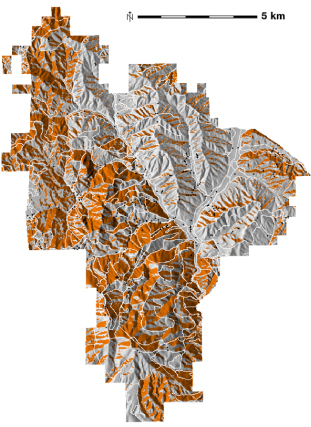New Technologies in Soil Survey
Aspect angle is commonly used by soil scientists and ecologists as a qualitative proxy for landscape-scale variation in microclimate caused by the slope and orientation of relief. While aspect angle serves as a useful surrogate for the underlying processes that create microclimates, it cannot be directly used for the creation of physically-based models of landscape-scale soil development. Furthermore, special numerical methods are required to include raw aspect angle into statistical models. We developed a quantitative method for describing the variation in soil properties with solar radiation modeling, for use in current and future Soil Survey efforts and to depict soil properties at scales finer than traditional soil survey. We used the ESRA model to estimate a solar energy budget at each grid cell of a 10-meter resolution DEM from Pinnacles National Monument, Ca. Parameterization of the clear-sky version of this model was accomplished with daily estimates of the Linke turbidity factor, using local pyranometer measurements (11 year record). Our estimated daily irradiance values matched the local weather station data with an R2 of 0.965 (n=365, p < 2.2 10−16). Solar radiation thresholds partitioning Mollisols from and other soils were identified by stepping through the range of possible values and performing a binomial test of independence at each step. Next, solar radiation values coupled with a local geologic map were used as predictor variables in a logistic regression model constructed to predict the spatial distribution of Mollisols within the park. The solar radiation method developed for this study out-performed the classical aspect-based approach. New Soil Survey products including an estimated probability map were produced. These methods can possibly be used to fill-in the currently un-mapped locations of soil components, identified within a Soil Survey.
Identification of modeled regions classified as having a Mollisol at a 0.431 probability cutt-off. White lines represent the traditional soil survey polygons.

New Technologies in Soil Survey

